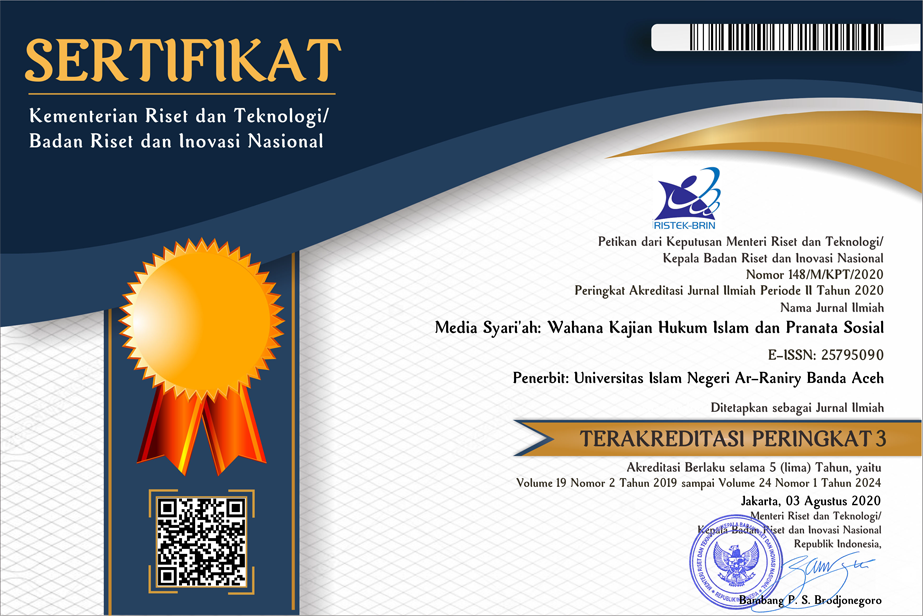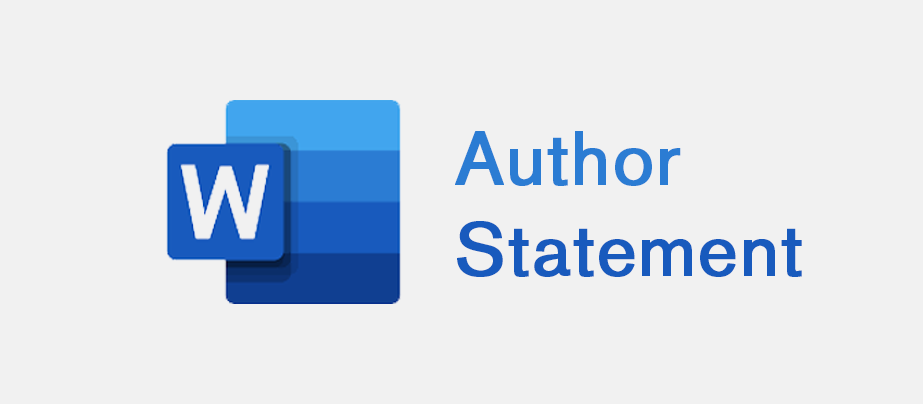Landscape of Individual Muslim Giving in Malaysia: an Analysis
DOI:
https://doi.org/10.22373/jms.v17i1.1927Keywords:
Philanthropy, Landscape, Individual, Giving, DemographicAbstract
The landscape of donor funding for international development appears to be changing significantly. Private philanthropic donors are playing an increasingly important role. The list in World Giving Index was shown that Malaysia has been in 71 ranking on world giving index in 2013. This paper provides insight into the characteristics of individual Muslim in Malaysia towards giving. Data were collected via online approach, 556 questionnaires were received. The result shows donors’ satisfaction and level of well being do influence tendency to donate. While the transparency issue, and attitude do not influence the decision to donate. This is due to high donor trust and consequently less demand on transparency. For demographic factors four variables significant to determine behavior of giving: gender; age; level of income and education background of the respondent. Further research in this area should attempt to make cross-cultural comparisons of donor characteristics. This would provide a more holistic perspective on donor behavior.References
Andreoni,J,(1989). ‘Giving with Impure Alturism: Applications to Charity and Ricardian Equivalence’.The Journal of Political Economy.Vol 97(6), pp 1447-1458
Adreoni, J. (1990). ‘Impure Alturism and Donations to Public Goods: A Theory of Warm-Glow Giving’, Economic Journal, 100, pp 464-477.
Andreoni, J., & Miller (2002).‘Giving According to GARP.An Experimental Test of the Consistency of Preferenes for Alturism’.Econometrica, Vol 70(2). Pp 737-753.
Andreoni, J. (2006). Philanthropy.In L-A Derard-Varet, S-C.Kolm& J.M. Ythier (Eds), Handbook of Giving Reciprocity and Alturism, North Holland: Elsevier, pp 1201-1269
Alterman, Jom B.Hunter, Shiren and Philips, Ann L (2005). ‘The Idea and Practice of Philathropy in the Muslim World’. The Muslim World Series. PN-ADD-444, pp. 13-26
AmirulFaiz, Htay, Sheila Nu Nu and Mohamed, Mustafa Omar and Osman,(2012) Determinants of cash waqf giving in Malaysia: survey of selected works. In: Workshop Antarbangsa Pembangunan Berteraskan Islam V (WAPI-5), 10 Apr 2012, Medan, Indonesia. (Unpublished)
Basil, D.Z., Ridway, N.M. and Basdil, M.D. (2008), “Guilt and giving: a processmodel of empathy and efficacyâ€, Psychology & Marketing, Vol.25 No.1, pp.1-23.
Bekkers, R. and Schuyt, T. (2008), “And who is your neighbour? Explaining denomination a differences in charitable giving and volunteering in the Netherlandsâ€, Review of Religious Research, Vol. 50 No. 1, pp. 74-96.
Bennett, R. (2003), “Factors underlying the inclination to donate to particular types of charityâ€, International Journal of Nonprofit and Voluntary Sector Marketing, Vol. 8 No. 1, pp. 12-29.
Bernholz,L. (2010). Philanthropy and Social Investing: Blueprint 2010 GIA Reader, Vol 21, No 2 (Summer 2010)
Brewer, G.A. (2003), “Building social capital: civic attitudes and behavior of public servantsâ€, Journal of Public Administration Research and Theory, Vol. 13 No. 1, pp. 5-26. Monroe, 1990,
Bryant, W.K., Slaughter, H.J., Kang,H., & Tax, A. (2003). ‘Participating in Philanthropic Activities: Donating Money and Time’. Journal of Consumer Policy.Vol 20(1), pp 43-73.
Carkoglu, A. 2006, ‘Trends in Individual Giving and Foundation Practices in Turkey’ in Philanthropy in Turkey: Citizens, Foundations and the Pursuit of Social Justice, (eds.) F. Bikmen & R. Zincir, TUSEV Publications, Istanbul.
C. Eckel & Grossman, (2004). ‘Giving to secular causes by the religious and non religous: An experimental test of the responsiveness of giving to subsidies’. Nonprofit Volunter. Sec Q., Vol 33(2),pp 271-289.
Comte, A. (1858), The Catechism of Positive Religion (trans by R. Congreve), John Chapman, London.
Comte, A. (1865), A General View of Positivism (Trans by J.H. Bridges), Trubner and Co, London.
Comte, A. (1891), The Catechism of Positive Religion (Trans by R. Congreve), 3rd ed., Kegan Paul, London, 1st published in French 1852, in English trans. 1858).
Croson, R. and Gneezy, U. (2009), ‘Gender differences in preferences’, Journal of Economic Literature, Vol. 47 No. 2, pp. 1-27.
Cummins, R. A., Lau, A. L. D., & Stokes, M. (2004). ‘HRQOL and subjective wellbeing: noncomplementary forms of outcome measurement’. Expert Reviews in Pharmacoeconomics Outcomes Research, 4, 413-420.
Cummins, R. A., McCabe, M. P., & Romeo, Y. (1994). The Comprehensive Quality of Life Scale – Intellectual Disability: Results from a Victorian Survey. Paper presented at the 29 th National Conference of the Australian Society for the Study of Intellectual Disability
DankoW.D.and Stanley, T.J. (1986). ‘Identifying and reaching the donation prone individual: a nationwide assessment’. Journal of Professional Series Marketing, Vol.2.Nos ½, pp117-122.
Dixon, T. (2008), The Invention of Altruism: Making Moral Meanings in Victorian Britain, Oxford University Press, Oxford.
Dvorak, T. and Toubman, S.R. (2013), ‘Are women more generous than men? Evidence fromalumni donations’, Eastern Economic Journal, Vol. 39, pp. 121-131.
Elizabeth Coswell, (2002). Private Philanthropy in Malaysia. Macalaster, Vol 12, artikel 13.
Eisenberg, N. (1986), Altruistic Emotion, Cognition, and Behavior, Lawrence Erlbaum Associates, Hillsdale, NJ.
Eveland, V. and Crutchfield, T. (2007), ‘Understanding why people do not give: strategic funding concerns for AIDS related nonprofits’, International Journal of Nonprofit and Voluntary Sector Marketing, Vol. 12 No. 1, pp. 1-12.
Frydman, M., Ledruc, I., Hofmans, V. and Molinier, C. (1995), ‘The development of altruistic attitudes’, Enfance, Vol. 1, pp. 89-100.
Gates, D.K. and Steane, P. (2007), ‘Historical origins and development of economic rationalism’, Journal of Management History, Vol. 13 No. 4, pp. 330-358.
Grace and Griffin, (2006). ‘Exploring conspiuousness in the context of donation behaviour’. International Journal of Nonprofit and Voluntary Sector Marketing, Vol.11, pp147-154.
Hasan Basri and A.k.Siti-Nabiha (2010).‘Towards Good Accountability: The Role of Accounting in Islamic Religious Organisations’. World Academy of Science, Engineering and Technology. Vol: 420120-06-25
Hibbert, S., Horne, S. and Tagg, S. (2005), ‘Charity retailers in competition for merchandise:
examining how consumers dispose of used goods’, Journal of Business Research, Vol. 58 No. 6, pp. 819-828.
James, R.N. and Sharpe, D.L. (2007), ‘The nature and causes of the U-shaped charitable giving profile’, Nonprofit and Voluntary Sector Quarterly, Vol. 36 No. 2, pp. 218-238.
Karylowski, J. (1982), ‘Two types of altruistic behavior: doing good to feel good or to make the other feel good’, in Derlega, V.J. and Grzelak, J. (Eds), Cooperation and Helping Behavior: Theories and Research, Academic Press, New York, NY.
Lau, T.C. and Tan, B.C. (2009), ‘Religiosity as an antecedent of attitude towards green products: an exploratory research on young Malaysian consumers’, Asean Marketing Journal, Vol. 1 No. 1, pp. 29-36.
Lee, Y.and Chiang, C. (2007). ‘Who gives what to charity? Characteristics affecting donation behaviour’, Social Behaviour and Personalit, Vol.35 N0.9, pp. 1173-1180.
Loch, A., Hilmi, I.N., Mazam, Z., Pillay, Y. and Choon, D.S.K. (2010), ‘Differences in attitude towards cadaveric organ donation: observations in a multiracial Malaysian society’, Hong Kong Journal of Emergency Medicine, Vol. 17 No. 3, pp. 236-243.
Lwin, M., Phau, I. and Lim, A. (2013), ‘Charitable donations: empirical evidence from Brunei’, Asia-Pacific Journal of Business Administration, Vol. 5 No. 3, pp. 215-233.
Min Teah and Michael Lwin. (2014). ‘Moderating role of religous beliefs on attitudes towards charities and motivation to donate’. Asia Pacific Journal Of Marketing and Logistics. Vol 28, No.5, pp 738-760
Moll, J., Krueger., Zahn, R., Pardini, M., De Oliveira-Souza, R., &Grafman, J. (2006). Human fronto-mesolimbic networks guide decisions about charitable donation. Proceeding of the National Academy of Sciences, 103(42), pp 15623 – 15628.
Mokhlis, S. (2009), ‘Religious differences in some selected aspects of consumer behaviour: a Malaysian study’, The Journal of International Management Studies, Vol. 4 No. 1, pp. 67-76.
Muhammad Younus and Farhina Hameed (2014). ‘The effect of Demographic, Socio-economic and Other Characteristics on Donations’. Journal of Social Sciences 6 (2), pp 55-76.
Myers, G.M. (1990), ‘Optimality, free mobility, and the regional authority in a federation’, Journal of Public Economics, Vol. 43 No. 1, pp. 107-121.
Otto, P.E. and Bolle, F. (2011), ‘Multiple facets of altruism and their influence on blood donation’, The Journal of Socio-Economics, Vol. 40 No. 5, pp. 558-563.
Radley, A. and Kennedy, M. (1995), ‘Charitable giving by individuals: a study of attitudes and practice’, Human Relations, Vol. 48 No. 6, pp. 685-709.
Ranganathan, S.K. and Henley, W.H. (2008). ‘Determinnts of charitable donation intentions: a strucrtural equation model’, International Journal of Nonprofit and Voluntary Sector Marketing, Vol.22 No.4, pp.572-581
Reitsma, J., Scheepers, P. and Te Grotenhuis, M. (2006), ‘Dimensions of individual religiosity and charity: cross-national effect differences in European countries’, Review of Religious Research, Vol. 47 No. 4, pp. 347-362.
René Bekkers and Pamala Wiepking (2007), ‘A literature Review of empirical Studies of Philanthropy: Eight Mechanism that Drive Charitable Giving’. Nonprofit Voluntary Sector Quarterly, 40(5), 924-973.
Riecken, G. and Yavas, U. (2005), ‘The attitudes of donors and non-donors to the march of dimes charity in the United States: a case study in non-profit marketing’, International Journal of Management, Vol. 22 No. 4, pp. 572-581.
Roberts, J.A. and Roberts, C.R. (2012), ‘Money matters: does the symbolic presence of money affect charitable giving and attitudes among adolescents?’, Young Consumers: Insight and Ideas for Responsible Marketers, Vol. 13 No. 4, pp. 329-336.
Sargent, (1999). ‘Charitable giving towards a model of donor behaviour’, Journal of Marketing Management, Vol.13 No.4, pp 215-238.
Schlegelmilch, B.B., Diamantopoluos, A. and Love, A. (1997a),’Characteristics affecting charitable donations: empirical evidence from Britain’, Journal of Marketing Practice: Applied Marketing Science, Vol. 3 No. 1, pp. 14-28.
Ryckman, R.M., Thornton, B., van den Borne, B. and Gold J.A. (2004), ‘Intrinsic-extrinsic religiosity and university students’ willingness to donate organs posthumouslyâ€, Journal of Applied Social Psychology, Vol. 34 No. 1, pp. 196-205.
Schlegelmilch, B.B., Love, A. and Diamantopoluos, A. (1997b), ‘Response to different charity appeals: the impact of donor characteristics on the amount of donations’, European Journal of Marketing, Vol. 31 No. 8, pp. 548-560.
Simmons and Emanuele, (2007); Simmons, W. and Emanuele, R. (2012), ‘Giving patters by religious and non-religious people’, The Journal of Applied Business Research, Vol. 28 No. 6, pp. 1243-1251.
Schervish, P.G. and J.J. Havens,(1997). ‘Social participation and charitable giving: A multivariate analysis’. Voluntas, 8(3): 235- 260.
Schlegelmilch, B.B., A. Diamantopoulos and A. Love, (1997). ‘Characteristics affecting charitable donations: empirical evidence from Brit’. J. Market. Pract., 3(1): 14-28.
Schwartz, S.H. (1970), ‘Elicitation of moral and self-enhancing behavior, an experimental study of volunteering to be a bone marrow donor’, Journal of Personality and Social Psychology, Vol. 15 No. 4, pp. 283-293.
Shelley, L. and M.J. Polonsky, (2006). ‘Do charitable causes need to segment their current donor base on demographic factors? An Australian examination’. Int. J. Nonprof. Volunt. Sec. Market., 7(1): 19-29.
Smith and Mc.Sweeney A.(2007), ‘Charitable giving: the effectiveness of arevised theory of planned behavior model in predicting donation intentions and behavior’, Journal of community & Applied Social Psychology, Vol.17 No.5, pp.220-236.
Sober, E. (1990), ‘What is psychological egoism?’, Behaviorism, Vol. 17 No. 2, pp. 89-102.
Soetevent, A.R.(2005). ‘Anonymity in giving a natural context- a field experiment in 30 churches’.Journal of Public Economics, 89,pp 2301-2323.
Sofia Yasmin, Roszaini Haniffa and Mohammad Hudaib (2014). ‘Communicated Accountability by Faith-Based Charity Organizations’. Journal Business Ethics Vol 122, pp 103-123.
Staub, E. (1978), Positive Social Behavior and Morality: Personal and Social Influences, Vol. 1, Academic Press, New York, NY.
Stephenson, M.T., Morgan, S.E., Roberts-Perez, S.D., Tyler, H., Walid, A. and Long, S.D. (2008), ‘The role of religiosity, religious norms, subjective norms, and bodily integrity in signing an organ donor card’, Health Communications, Vol. 23 No. 5, pp. 436-447.
Tashfeen, Siddique dan Ali Bhatti, Faith Based After Life Incentives in Philanthropic Behavior.http://www.thearda.com/asrec/archive/papers/Tashfeen,%20Siddique%20and%20Bhatti%20-%20Faith%20Based.pdf
Todd, S.J., & Lawson, R.W.(1999). ‘Towrds a better understanding of the financial donor: An examinationof donor behaviour in terms pof value structure and demographics’. Interntaional Journal of Nonprofit and Voluntary Sector Marketing, 4(3), 235-244.
Weerts, D.J., & Ronca ,J.M. (2007). ‘Profiles of Supportive Alumni: Donors, Volunteers, and Those Who “Do It All’. Interntional Journal of Educational Advancement, 7(1), 20-34.
Wiepking, P. and R. Bekkers, 2011. Who gives? ‘A literature review of predictors of charitable giving’. Volunt. Sec. Rev., 2(3): 337-65.
Wong, L.P.(2010) , ‘Information needs, preferred educational messages and channel of delivery, and opinion on strategies to promote organ donation: a multicultural perspective’, Singapore Medical Journal, Vol 51 No. 10, pp.790-795.
Downloads
Published
Issue
Section
License
MEDIA SYARI'AH: Wahana Kajian Hukum Islam dan Pranata Sosial has CC-BY-SA or an equivalent license as the optimal license for the publication, distribution, use, and reuse of scholarly work. Authors who publish with this journal agree to the following terms:
1. Authors retain copyright and grant the journal right of first publication with the work simultaneously licensed under a Creative Commons Attribution-ShareAlike 4.0 International License that allows others to share the work with an acknowledgment of the work's authorship and initial publication in this journal.
2. Authors are able to enter into separate, additional contractual arrangements for the non-exclusive distribution of the journal's published version of the work (e.g., post it to an institutional repository or publish it in a book), with an acknowledgment of its initial publication in this journal.
3. Authors are permitted and encouraged to post their work online (e.g., in institutional repositories or on their website) prior to and during the submission process, as it can lead to productive exchanges, as well as earlier and greater citation of published work (See The Effect of Open Access).
You are free to:
Share — copy and redistribute the material in any medium or format.
Adapt — remix, transform, and build upon the material for any purpose, even commercially.
The licensor cannot revoke these freedoms as long as you follow the license terms.
All papers published in MEDIA SYARI'AH: Wahana Kajian Hukum Islam dan Pranata Sosial are licensed under a Creative Commons Attribution-ShareAlike 4.0 International License.



.png)


.png)
.png)
.png)



